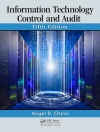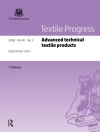The Grid computing concept, which allows users to integrate administratively and g- graphically dispersed computing resources, has been gaining traction in a number of application areas during the past few years. By interconnecting many – heterogeneous, though usually virtualized – computing resources, virtual computer centers or superc- puters can be created, providing a seamless supply of computing resources. Grid comp- ing provides benefits not only for scientific computing (e.g., SETI@home, which interconnects one million computers across 226 countries with a total processing power of 711 TFLOPS) but also in a commercial environment. It is projected that computing Grids can lower the total IT costs of businesses by 30%. The report "Grid Computing: A Vertical Market Perspective 2005-2010" (by The Insight Research Corporation) estimates an increase of worldwide Grid spending from $714.9 million in 2005 to approximately $19.2 billion in 2010. One of the most prominent activities in academia is the EGEE project being funded with 30 MEuro by the European Commission. EGEE brings together researchers from over 27 countries with the common aim of developing a service Grid infrastructure, which is suited for scientific computing with very high demand for processing power.
Thomas Fahringer & Dirk Neumann
Grid Economics and Business Models [PDF ebook]
5th International Workshop, GECON 2008, Las Palmas de Gran Canaria, Spain, August 26, 2008, Proceeedings
Grid Economics and Business Models [PDF ebook]
5th International Workshop, GECON 2008, Las Palmas de Gran Canaria, Spain, August 26, 2008, Proceeedings
Bu e-kitabı satın alın ve 1 tane daha ÜCRETSİZ kazanın!
Dil İngilizce ● Biçim PDF ● ISBN 9783540854852 ● Editör Thomas Fahringer & Dirk Neumann ● Yayımcı Springer Berlin Heidelberg ● Yayınlanan 2008 ● İndirilebilir 6 kez ● Döviz EUR ● Kimlik 6320698 ● Kopya koruma Adobe DRM
DRM özellikli bir e-kitap okuyucu gerektirir












